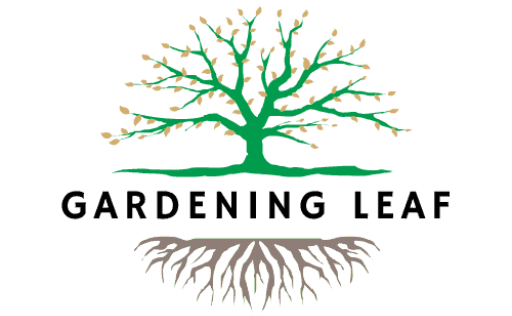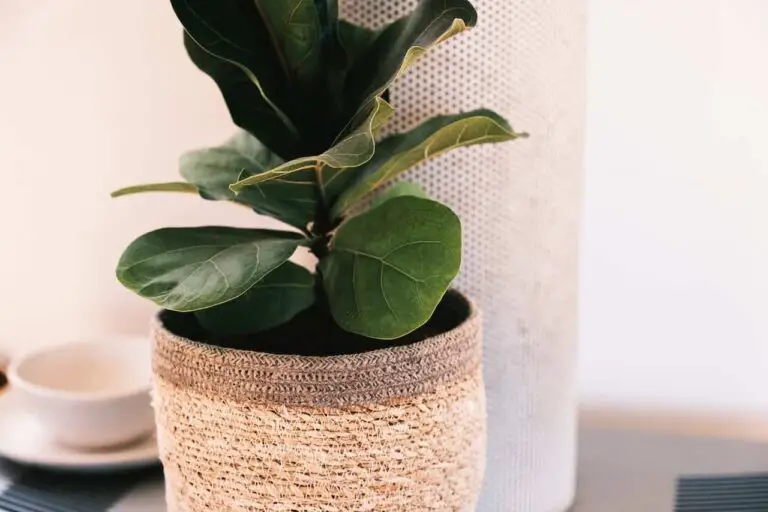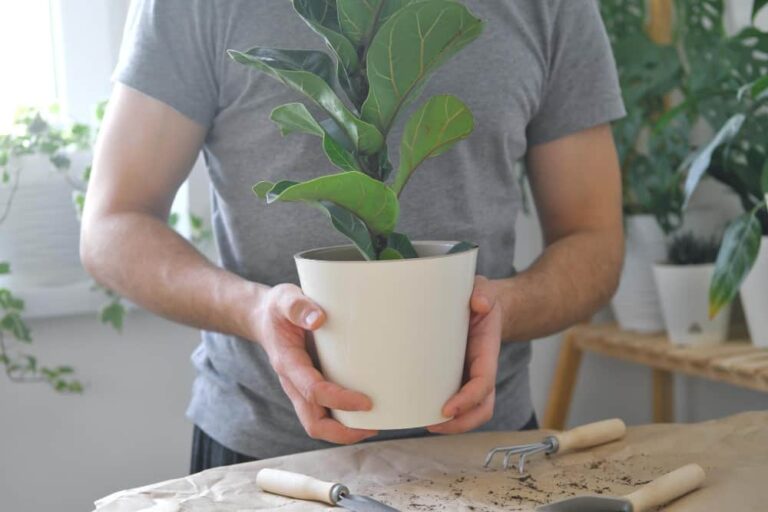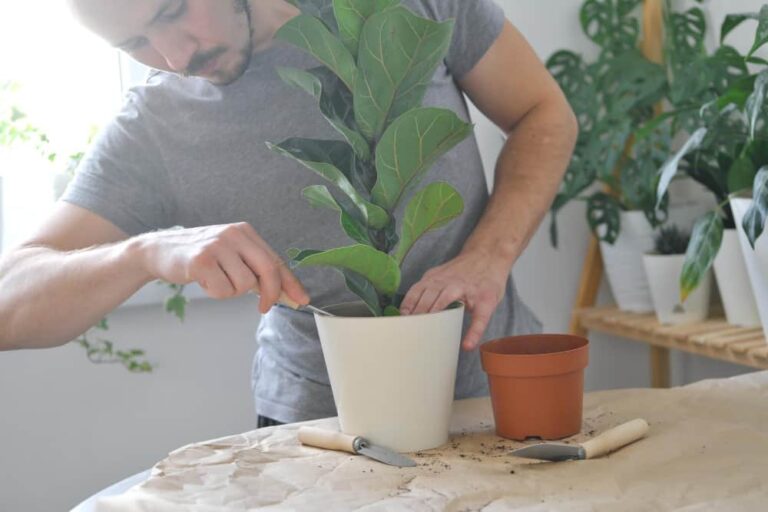Unlock The Secret: How To Make Fiddle Leaf Fig Branches
Have you ever looked at your fiddle leaf fig tree and wished it had more branches? With lush branches and enough leaves, they exude breathtaking beauty. We’re here to unlock the secret to making your fiddle leaf fig branches multiply and flourish.
We provide step-by-step guidance on how to make fiddle leaf fig branches, enabling you to learn the methods and tools required for successful branching.
Unlock the Secret: How to Make Fiddle Leaf Fig Branches
Pruning and propagation are the key techniques to help you achieve desired results. You may stimulate new branches’ development by pruning the tree. Below we discuss this in detail.
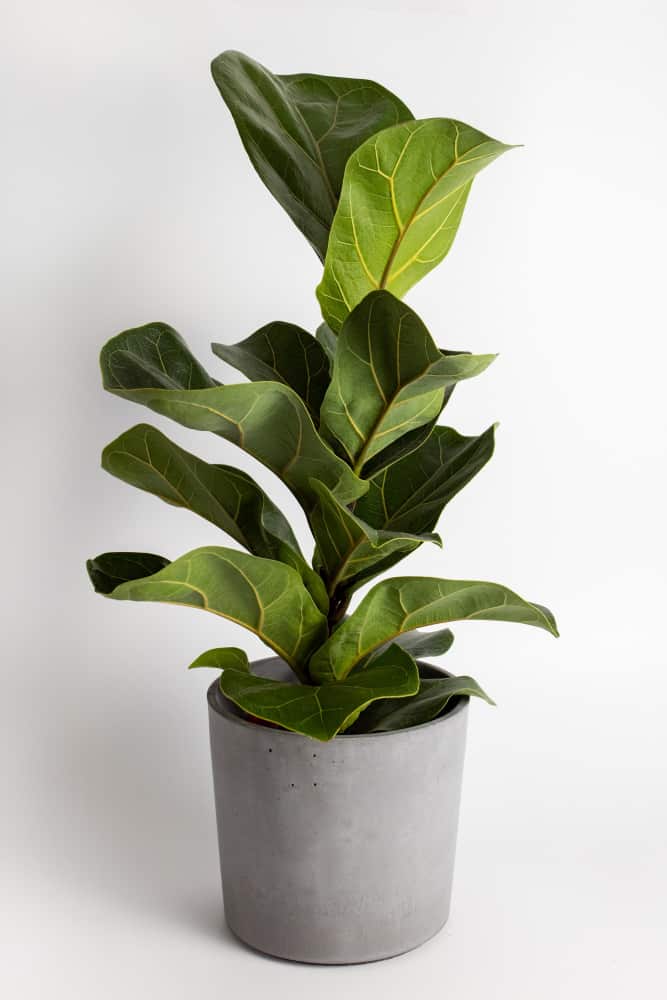
Understanding Fiddle Leaf Fig Pruning Techniques
Understanding pruning techniques is essential to maintain the tree’s health and appearance.
Proficient in pruning, you can stimulate new growth and achieve a more lush and dense plant. Pruning your fiddle leaf fig encourages the development of many branches. It results in a fuller and more vibrant plant.
Pruning serves several benefits as it removes diseased or dead branches. The stimulation of new growth and the shaping of the plant into the desired shape. Through pruning, you can stimulate the growth of branches and make a bushier and more compact plant.
Read More : –10 Best Pots For Fiddle Leaf Fig
Tools required
You’ll need some essential tools. Such as sharp and clean pruning shears or scissors, gloves to shield your hands, and a clean cloth or paper towel to wipe the tools after each cut. Sanitizer is also required to ensure the plant does not get infested.
Pruning
Start by looking at your Fiddle Leaf Fig and finding any branches that are dead, broken, or sick. These branches don’t help the plant’s health or appearance, so cut them off.
Make clean cuts above the next healthy node or leaf to get new growth going.
Next, look for branches growing inward or crossing each other. These branches can hinder the development of the plant.
Pruning them will help to create a better structure. Cut these branches above a healthy node or leaf. Guaranteeing the remaining branches have enough space to grow.
Pinching & Branching
Once you have removed the unwanted branches, it’s time to focus on pinching and branching. Pinching is an essential technique that encourages the growth of new branches and a bushier plant.
Use your fingers to pinch off the topmost part of each stem from pinching your fiddle leaf fig. This will signal the plant needs to branch out from that point.
By regularly pinching, you can promote a fuller and more compact shape. Also, to pinching, you can encourage branching by making strategic cuts. Look for areas where you want more branches to grow and make small, angled cuts just above a node or leaf. This will stimulate the plant to develop new branches from that point.
Another popular method you can use is “branching”. The process entails removing the upper part of the primary stem and encouraging the growth of new branches from the nodes of leaves.
By removing branches that are causing the plant’s shape. You achieve a look that is symmetrical and visually pleasing.
Remember that pruning is a continuing process. It allows you to continue to shape and nurture your Fiddle Leaf Fig throughout its lifetime.

Propagate
You may start new plants from those fiddle leaf fig cuttings if you want to propagate them.
Start them from the fiddle leaf fig cuttings you have taken during pruning. Apply the rooting hormone before placing the cutting in the water or soil.
Set the cuttings in water or soil, and position them in a warm and humid area. With time and proper care, you will start to see new roots. When the root develops, pot them in the well-drainage soil mix.
Read More : – How To Propagate Fiddle Leaf Fig Tree
Aftercare Fiddle Leaf Fig
Pruning is an important task that helps maintain the health and shape of fig trees. But, it is only part of the equation.
After pruning, proper care and attention are needed. To ensure the growth of new branches and a bountiful harvest.
Watering
After pruning, the tree may experience some stress. And proper watering is important for recovery. Water them deeply and sufficiently. This will help the tree replenish its moisture and regain its strength. To prevent root rot, avoid overwatering the tree. Instead, water it when the soil’s top inch feels dry.
Applying organic mulch around the tree’s base keeps moisture and regulates temperature.
Fertilize
After pruning, give them essential nutrients. It stimulates strong growth and fosters the emergence of new branches. Apply balanced fertilizer that includes nitrogen, phosphorus, and potassium (NPK) is advisable. Apply during the beginning of spring and again in early summer.
Pest
After pruning your fiddle leaf fig tree, watching for pests that may hinder its growth is crucial. Mealybugs, spider mites, and scale insects commonly plague fiddle leaf figs.
Regularly examine your tree for any indications of infestation, such as leaves that have changed color or a sticky substance. If you notice any insects, take immediate action to avoid further harm.
You may fight these pests using natural solutions—suffocate bugs with water and mild dish soap. Neem oil and insecticidal soap may also manage pests. Apply according to the product label.
Sunlight
These plants flourish in well-lit areas that receive indirect sunlight. Position them where they can enjoy abundant daylight for the entire day. But, it is important to be careful of exposing them to direct sunlight, as this can cause damage to the leaves.
Rotate the plant to allow all sides to receive equal light exposure. This will prevent the branches from leaning towards the light source and promote even development.
Finally, it is important to have patience. These trees need time to establish and develop. The tree may take many growing seasons to reach its maximum potential and yield a plentiful harvest.
Read More: – Can you Propagate Aloe Vera from Leaf Cuttings?
What Is Notching?
Notching is a method used to promote new growth and branching in fiddle-leaf fig plants. Making a small cut or a notch above a leaf node stimulates the plant to produce new buds and branches at that spot. This technique can produce a fuller and bushier appearance for your fiddle leaf fig.
Is Notching the Same As Pinching and Pruning?
No, notching, pinching, and pruning are different techniques used in plant care. Notching is a technique that encourages branching by cutting a tiny notch or cutting into the stem of the plant. Pinching is removing the tip of a branch to promote bushier growth. Pruning involves cutting back larger sections of a plant for shaping and maintenance.
How Do You Notch a Fiddle Leaf Fig Tree?
Make a 1/4-inch deep incision at a 45-degree angle using a clean, sharp knife or razor blade to notch a fiddle leaf fig tree. This technique stimulates new branch growth and encourages a fuller appearance.
How long does it take a fiddle leaf fig to branch?
it depends on the plant’s health, age, and the care it gets. Generally, you can expect new growth and branching within a few weeks or months after notching.
But, patience is important as each plant may have its timeline. Ensuring that your fiddle leaf fig gets adequate sunlight, water, and nutrients. It will help promote healthy growth and faster branching.
Read More: – How To Revive A Fiddle Leaf Fig: The Ultimate Guide
Common Issues Why Fiddle Leaf Fig Branching Out Is Not Happening
Lack of Enough Light:
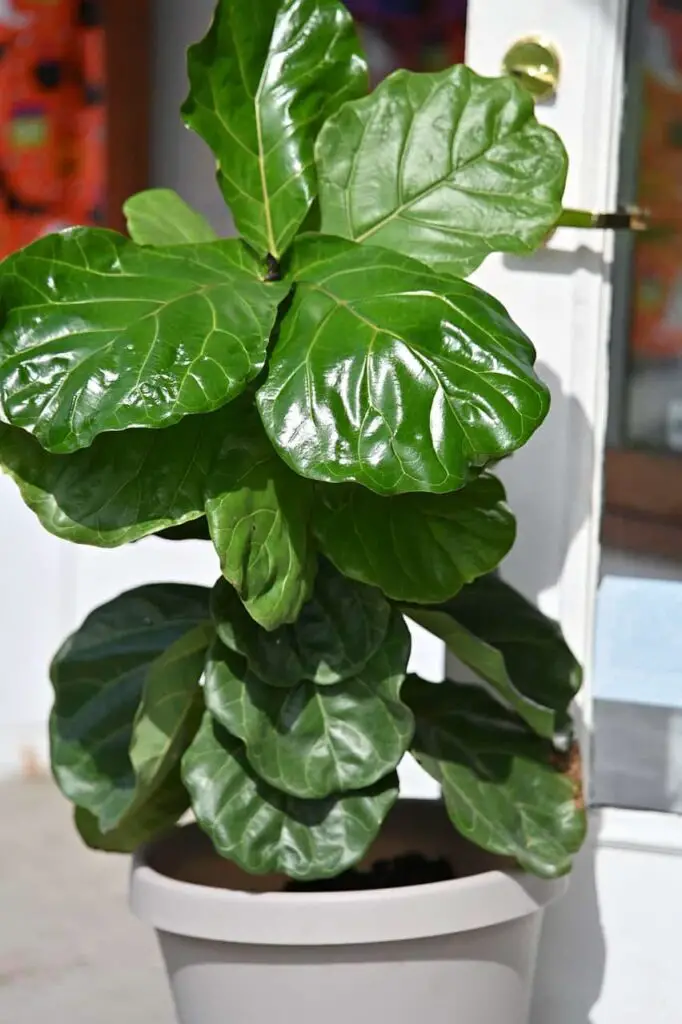
Fiddle Leaf Figs require bright, indirect light to thrive. If your plant is situated on the dark side, far from a window, it may not receive the necessary light to grow.
Overwatering:
These plants prefer potting soil that drains well. They may suffer root rot if kept in water for too long. New branches and leaves can’t develop amid excess dampness.
Inadequate Nutrition:
Lack of proper nutrients can hinder the plant’s ability to develop new branches. Consider using a balanced, water-soluble fertilizer formulated for indoor plants.
Improper Pruning:
Pruning plays a crucial role in encouraging branching in fiddle leaf figs. If you’ve been trimming your plant too aggressively. It may hinder the development of new limbs and branches. If the pruning is done correctly, the plant’s energy will be redirected into new growth and branching.
Insufficient Humidity:
Fiddle leaf figs prefer moderate to high humidity levels. In dry indoor environments, the lack of humidity can hinder the plant’s ability to branch out. To raise the humidity levels. Misting the leaves or positioning a water tray near the plant.
Lack of Air Circulation:
Branching in fiddle leaf figs can be hindered by stagnant airflow. Place it in an area with proper ventilation or use a fan nearby to generate a soft breeze.
Rootbound Plant:
Suppose your fiddle leaf fig becomes root-bound and stops root growth. It will be another reason why the plant is not growing. To learn whether this is the situation, it is imperative to inspect the root system. If indeed, transferring the plant to a new pot becomes essential.
Stress or environmental factors:
Fiddle leaf figs are sensitive plants and can be stressed by environmental changes. Temperature fluctuations, drafts, or being moved to a new location can all impact branch development.
Lack of Patience:
Branching out takes time, and it’s important to be patient. Even if you’ve followed all the care guidelines, your plant may take several months or even a year to produce new branches.
How do I get my fiddle leaf fig plant to grow more branches?
The best way to get more branches is Encourage them (ficus lyrata ) to produce more branches. Prune any leggy or unhealthy growth to redirect energy to new branch development.
Conclusion
With the above information, you now understand how to make fiddle leaf fig branches. Making a fiddle leaf fig branch is a simple and rewarding process.
Following above mention information. You can propagate your fiddle leaf fig tree and enhance your assortment of plants.
It is necessary to stay patient and allow sufficient time to grow. With proper care and attention, It will grow into a beautiful and thriving houseplant, adding greenery and beauty to your indoor space.
